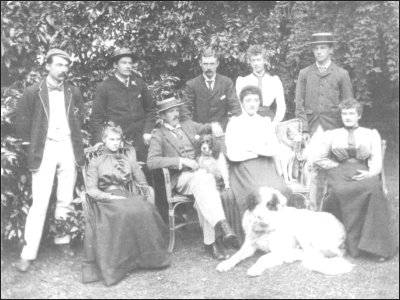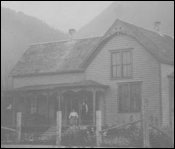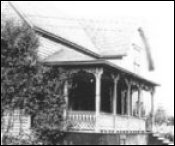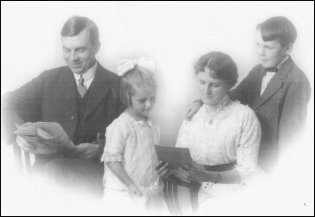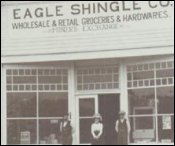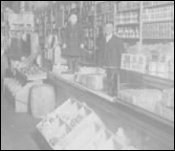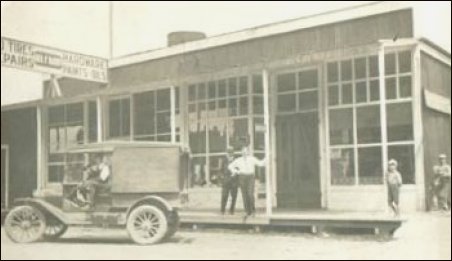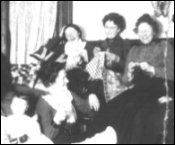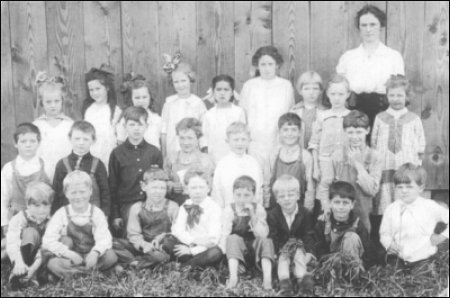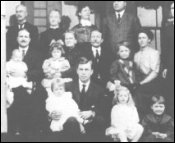Upper left: This photo of Gertrude's sewing bee in about 1900-01 show that the women knew how to loosen up and have a good tiime. The woman with her hand on her head in back was Hazel Fitzgerald, who was later a Hollywood script writer. Gertrude is next to her on the couch. At Gertrude's foot, holding yarn with both hands, is Grace Cockreham Pollard. To her right is Lola Sprinkle Slipper, holding her daughter Doris, born in 1899. Grace's daughter Betty Pollard Harris gave the photo to Sue as well as the school photo below.
Center: Lorna's class photo from the second or third grade, 1915-16. Sue's mother, Lorna, is the blonde in the back with the big bow in her hair. Next to her on the left are her two best friends, Betty Pollard and Kathryn Moore, and Theo Cumming is next to them. Mamie Pike and Winifred Henry are also in the photo, but we do not know which girls they were. Can anyone else identify students or the teacher in the photo?
Right: Slipper-Sprinkle family reunion in 1909 on the front porch of Simon Sprinkle's house, on the north side of Maple across from Fred G. Back row: (l. to r.) Jim Plott, John Slipper, Smith and Polly Fleming (parents of Ella), Ella Sprinkle, Ralph Sprinkle. Middle row: Mabel Plott (Gertrude's sister who later moved to North Carolina), Lola Slipper, Haddon Slipper, Ward Sprinkle (holding Wilbur), Emma Sprinkle (holding Helen), Simon H. Sprinkle, Thomas Armine Slipper, Gertrude Slipper(?), Grace Sprinkle. Bottom row: Doris Slipper, Bernice Sprinkle, Fred G. Slipper (holding Lorna), Frances Sprinkle and Marianne Slipper.
|
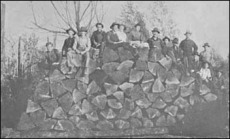
 810 Central Ave.,
810 Central Ave., 